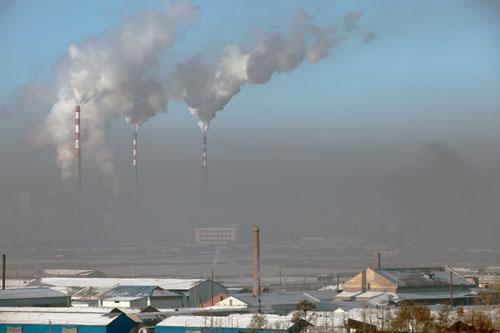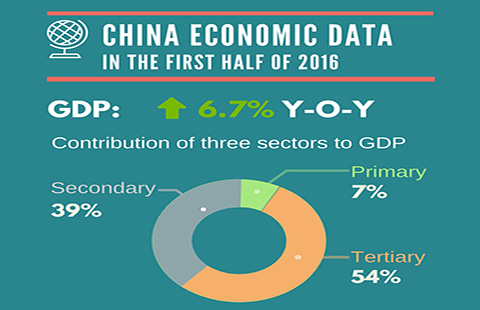Industries top cause of pollution
By Zheng Xin and Li Jing (China Daily) Updated: 2011-12-16 14:31People living near plants are more likely to develop illness and allergy
BEIJING - Industries produce more than 65 percent of air pollutants and seriously impair people's health, says a report released on Thursday by a Beijing-based environmental group.
|
 |
|
The city of Heihe, Heilongjiang province in Northeast China, is veiled by dark smog and emissions from a local thermal power plant. [Photo/China Daily] |
"Despite the fact that automotive emissions are the major cause of air contamination in urban areas, industrial pollution is the most stubborn factor for bad air," said Ma Jun, director of the Institute of Public and Environmental Affairs.
The institute's Report of Air Pollution Source Position comes as recent hazy and smoggy days nationwide have aroused public anxiety over health concerns.
"The air quality will be considerably enhanced if the illegal industries are well governed," Ma said.
Based on information from the Ministry of Environmental Protection, the institute analyzed data from the country's biggest 4,400 emitters.
According to the report, 85.7 percent of sulfur dioxide emissions came from industries, while they contributed 76.1 percent of nitric oxide emissions from 2006 to 2009.
More than half of the biggest emitters are located in the eastern coastal areas, while areas like Sichuan province in Southwest China, as well as the Ningxia Hui autonomous region and the Inner Mongolia autonomous region in northern China have also witnessed increasing industrial pollution.
The Yangtze River Delta is also seeing increasing emissions of pollutants.
Electricity industries account for 1,178 of the more than 4,400 polluting emitters, said Ma.
"In addition, the industries of steel, cement, coking and chemistry are also at the wheel on smoggy days."
Besides private enterprises, State-owned and foreign counterparts are among the emitters, said Ma.
He said most atmospheric pollutants, including sulfur dioxide, nitrogen dioxide, carbon monoxide and the volatile organic compounds, as well as almost all heavy metal particles and fluorides, are from the industries mentioned above.
"Residents near industrial areas are more likely to suffer from acute diseases," said Ma.
According to a study conducted in Tianjin in 1995, people living near thermal power industries, iron and steel smelting industries, chemical industries and car manufacturers are 4.5 times more likely to fall ill, including bronchitis, sore throats, colds, asthma and other allergies, said Ma.
He also called on the government to take more pollutants into consideration, rather than only sulfur dioxide and nitrogen oxides, while monitoring enterprises with heavy exhaust emissions.
"Other pollutants like particulate matters and volatile organic compounds are also very hazardous to people's health and should be listed in the standards," said Ma.
Ma said the cost of environmental degradation by air pollution in 2004 was almost 220 billion yuan ($34.3 billion), taking up 1.3 percent of the annual GDP, not accounting for the influence on daily life as well as the damaged health of the public.
"It's necessary that the information on pollution is accessible to the public - instead of for a small group of experts for research and study - so they are better informed of the dangers they're confronted with due to the polluting factories nearby," said Wang Weijia, former deputy director of the Society of Entrepreneurs and Ecology.
"Only with the participation and supervision of the public can the polluting enterprises better abide by the laws and reduce pollutants," he said.
- Animation blazes trail for cultural exports
- China conducts its first jet biofuel trial
- Train maker expects more export orders
- Boeing 787 Dreamliner makes commercial debut
- China to enhance civil aviation co-op with EADS
- Cultural industry crucial to China's economic development
- 3G mobile phone users exceed 100m
- Broad steps needed to sustain inclusive growth: G20 officials
- UK explores free trade deal with China
- 12 Chinese firms debuted in Fortune 500
- Infographics: China economy data in H1
- Sunny images of 60-year-old go viral
- China's top sovereign wealth fund quadruples in total assets in 8 years
- Standards for smart driving on the way
- Europe's first Traditional Chinese Medicine museum opens in San Marino


















